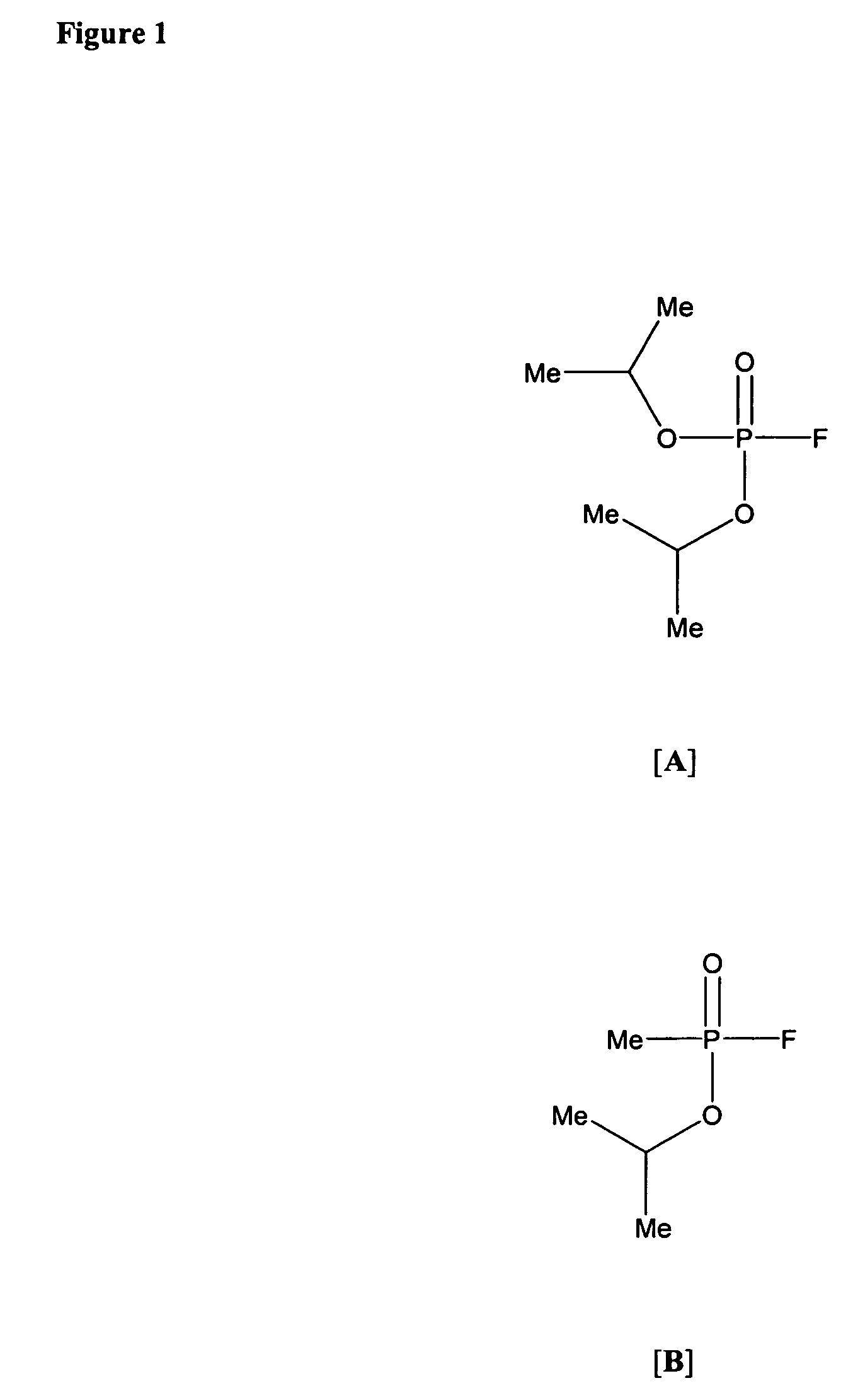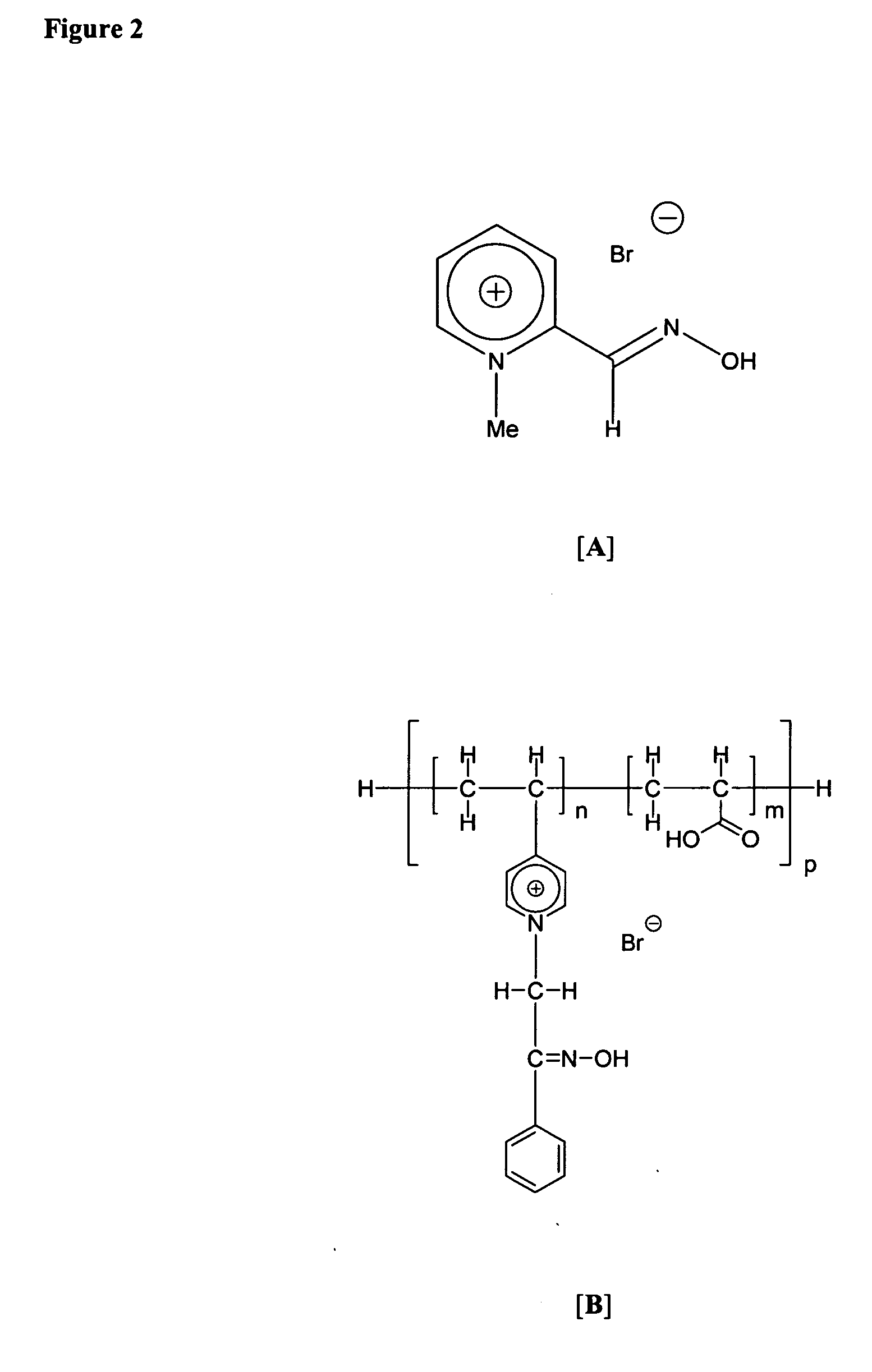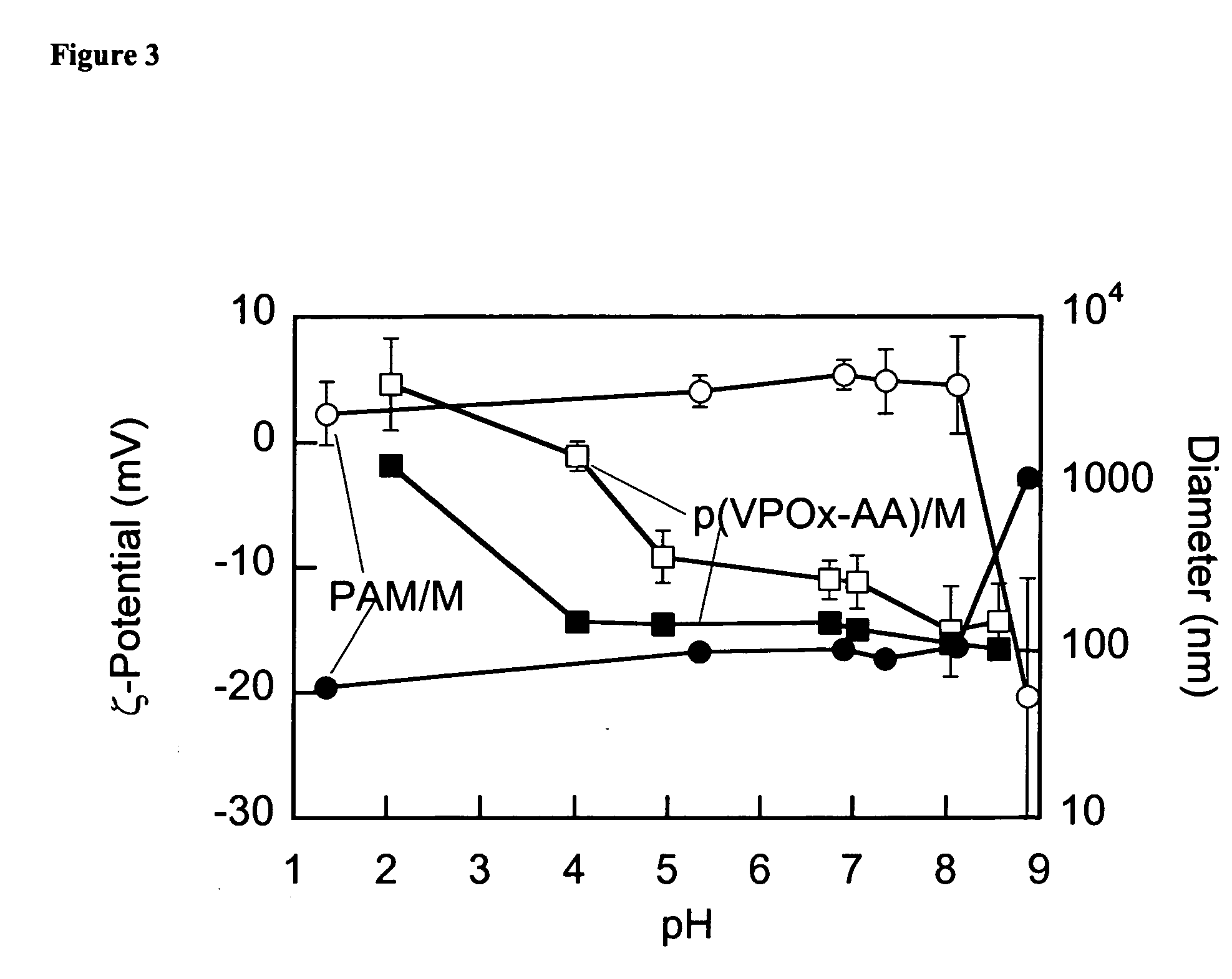Catalytic nanoparticles for nerve-agent destruction
a technology of catalytic nanoparticles and nerve agents, applied in physical/chemical process catalysts, organic compound/hydride/coordination complex catalysts, other chemical processes, etc., can solve the problems of large risks to human health and the environment, damage skin, paint, plastics, rubber, etc., and achieve the effect of ensuring recovery
- Summary
- Abstract
- Description
- Claims
- Application Information
AI Technical Summary
Benefits of technology
Problems solved by technology
Method used
Image
Examples
example 1
Materials Used
[0446]Iron (II) chloride tetrahydrate (99%), iron (III) chloride hexahydrate (98%), acrylic acid (99%), 4-vinylpyridine (95%), 2-bromoacetophenone (98%), 2-pyridinealdoxime methiodide (PAM, 99%), diisopropyl fluorophosphate (DFP, 99%), and 2,2′-azobisisobutyronityrile (AIBN, 98%) were purchased from Sigma-Aldrich Chemical Co. (St. Louis, Mo.) and used as received. All other chemicals, solvents, and gases were obtained from commercial sources and were of highest purity available.
example 2
Polymer Synthesis
[0447]Copolymer of acrylic acid (AA) and 4-vinyl pyridine (4-VP) was synthesized by free-radical copolymerization using AIBN as an initiator. A vial containing a solution of 0.1 mol (10 mL) of 4-VP, 0.1 mol (6.9 mL) of AA, and 0.2 g of AIBN in N,N-dimethylformamide (10 mL) was deaerated by nitrogen purge, sealed, and kept at 70° C. overnight. The resulting viscous copolymer [p(VP-AA)] solution was repeatedly washed by acetone and methanol and precipitated by hexane followed by drying under vacuum, dissolution in deionized water and exhaustive dialysis (membrane MWCO, 3.5 kDa) against DI water. The purified p(VP-AA) samples were lyophilized and stored dry at 2-8° C. until further use. (C12H17NO2)x, found (calc): C 69.26 (69.54); H 8.29 (8.27); N 7.74 (6.76). 1H NMR (400 MHz, CD3OD): δ 1.7 (m, 2H, CH2— in the main chain), 2.7 (m, 1H, CH— in the main chain), 7.2 (m, 3H, pyridine), 8.45 (m, 2 H, pyridine). Weight average MW by GPC 63 kDa, polydispersity index 1.9.
[0448]...
example 3
Particle Synthesis
[0449]Magnetic nanoparticles were produced by chemical coprecipitation of iron(II) and iron(III) chlorides. Namely, 1.88 g (7.0 mmol) of FeCl3.6H2O and 0.69 g (3.5 mmol) of FeCl2.4H2O were added to 40 mL of deionized water and the solution was deaerated by nitrogen purge in a stirred 250-mL three-necked flask and temperature of the flask contents was brought to 80° C. Then an aqueous solution of a stabilizing compound (2.6 to 2.8 g compound in 40 mL water, pH adjusted to 6) was added to the flask and the resulting mixture was equilibrated at 80° C. while stirring under nitrogen purge. Then the nitrogen purge was ceased and the contents of the flask were at once added to 80 mL of a 28% ammonium hydroxide and the mixture that rapidly turned black was vigorously stirred for 5-10 min. The resulting precipitate possessed strong magnetic properties and was thus separated from the liquid by decantation using a Franz Isodynamic Magnetic Separator (Trenton, N.J.). The preci...
PUM
| Property | Measurement | Unit |
|---|---|---|
| Diameter | aaaaa | aaaaa |
| Diameter | aaaaa | aaaaa |
| Diameter | aaaaa | aaaaa |
Abstract
Description
Claims
Application Information
 Login to View More
Login to View More - R&D
- Intellectual Property
- Life Sciences
- Materials
- Tech Scout
- Unparalleled Data Quality
- Higher Quality Content
- 60% Fewer Hallucinations
Browse by: Latest US Patents, China's latest patents, Technical Efficacy Thesaurus, Application Domain, Technology Topic, Popular Technical Reports.
© 2025 PatSnap. All rights reserved.Legal|Privacy policy|Modern Slavery Act Transparency Statement|Sitemap|About US| Contact US: help@patsnap.com



